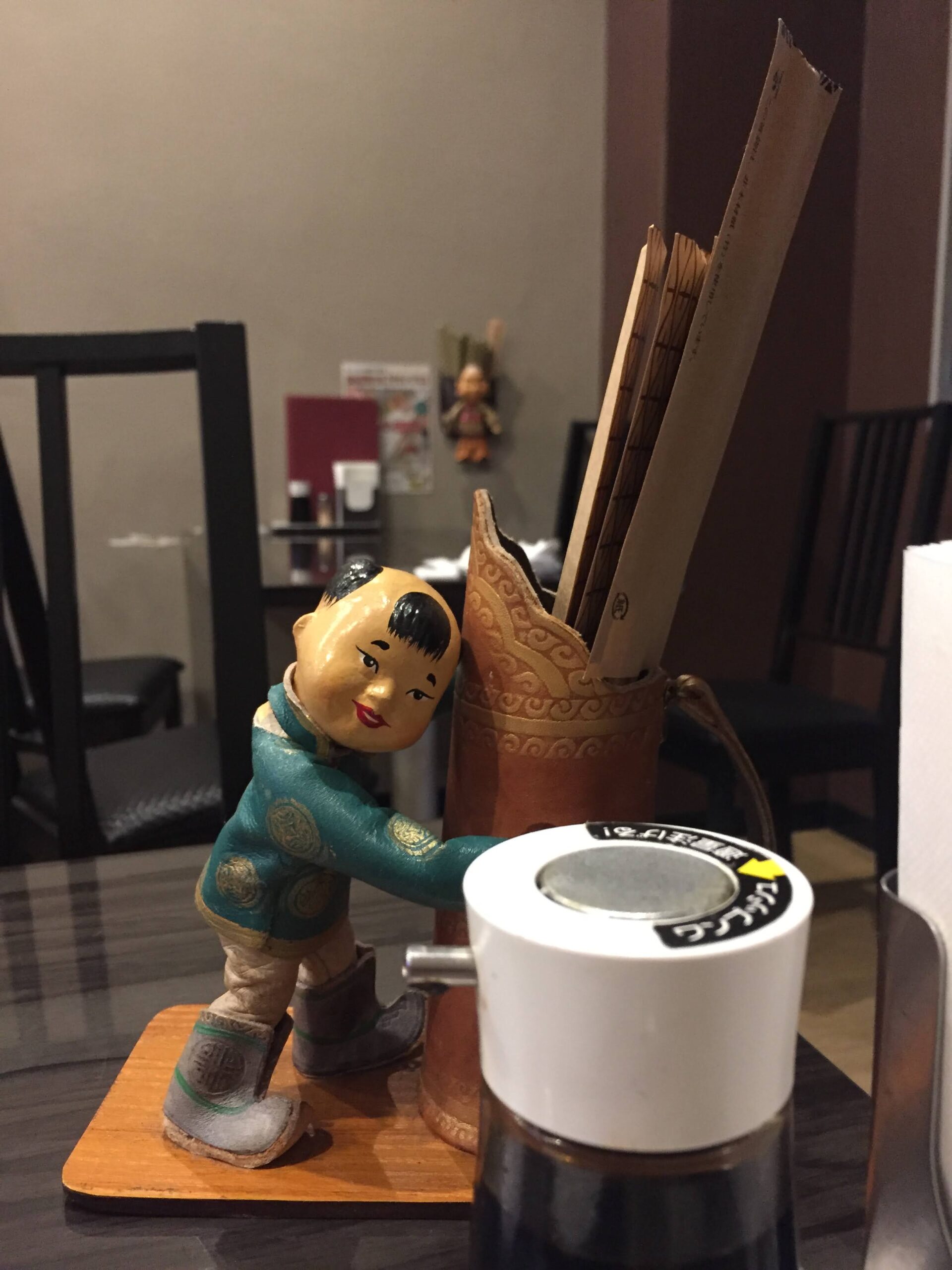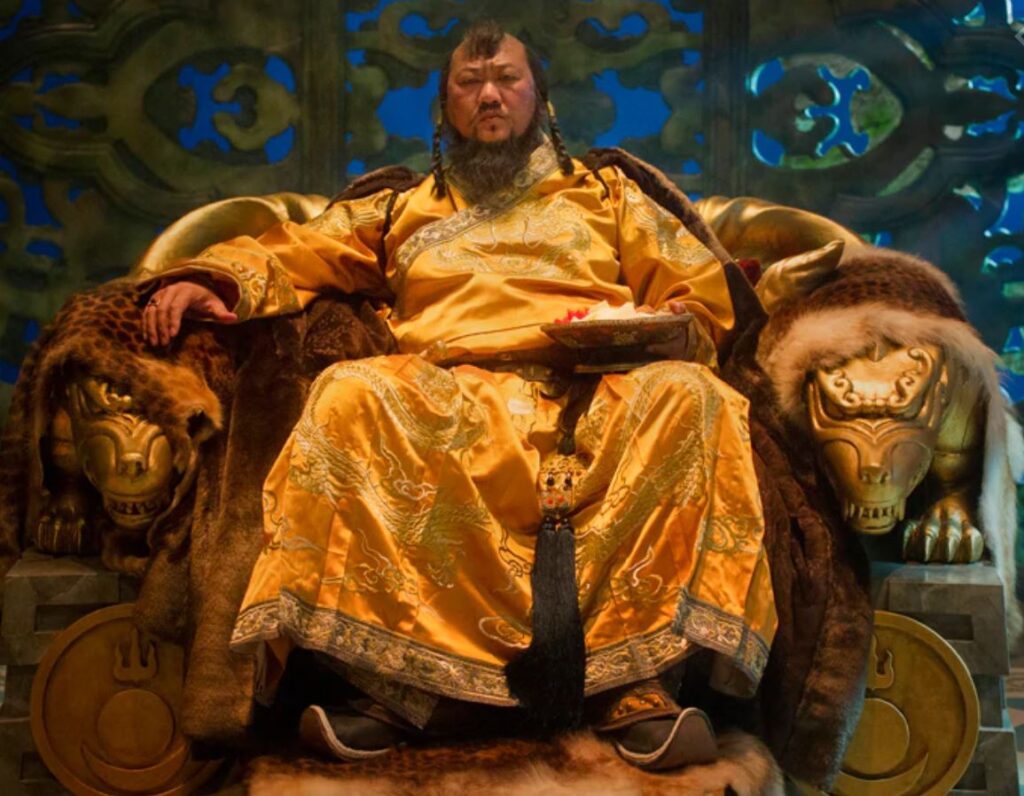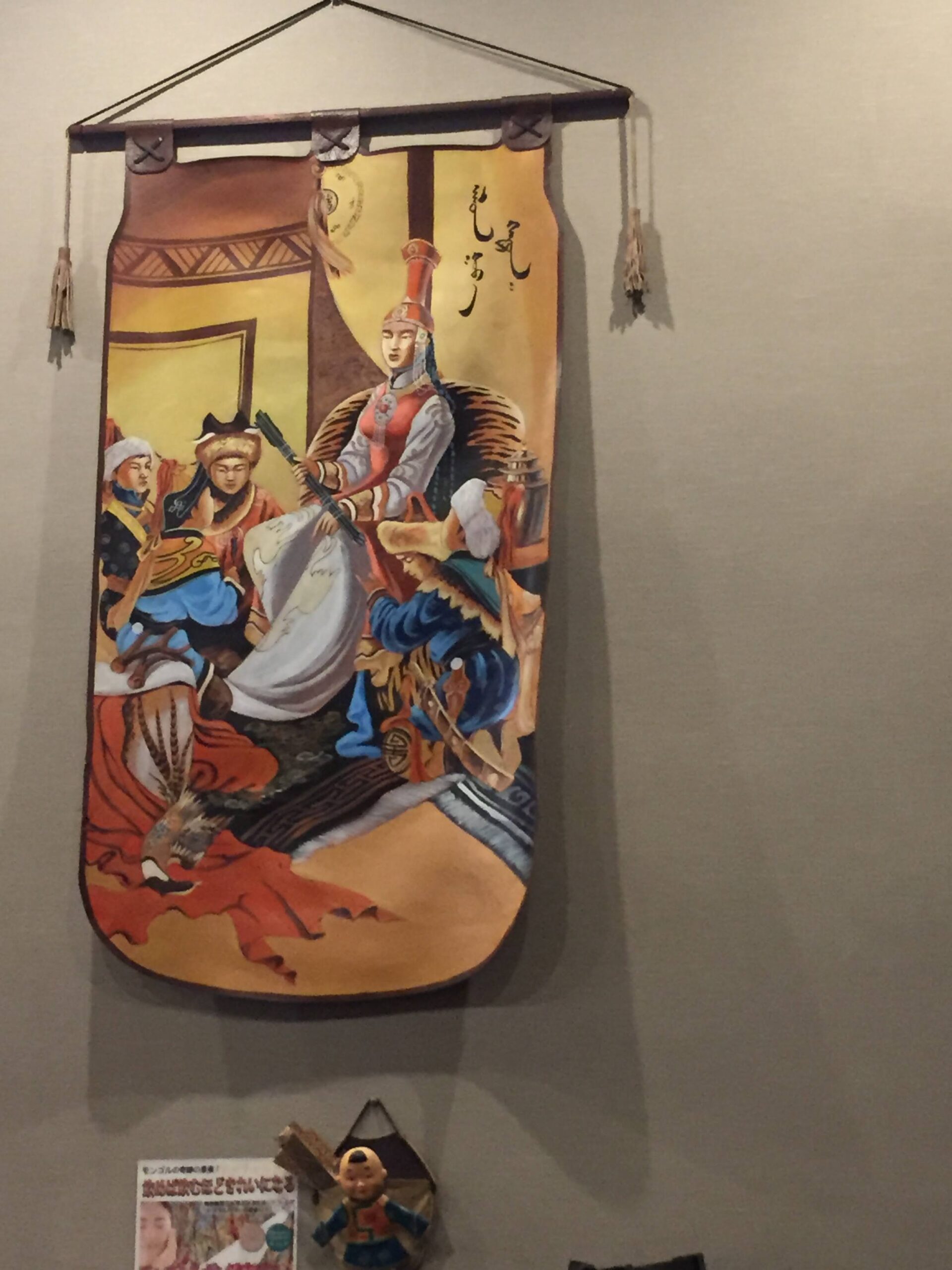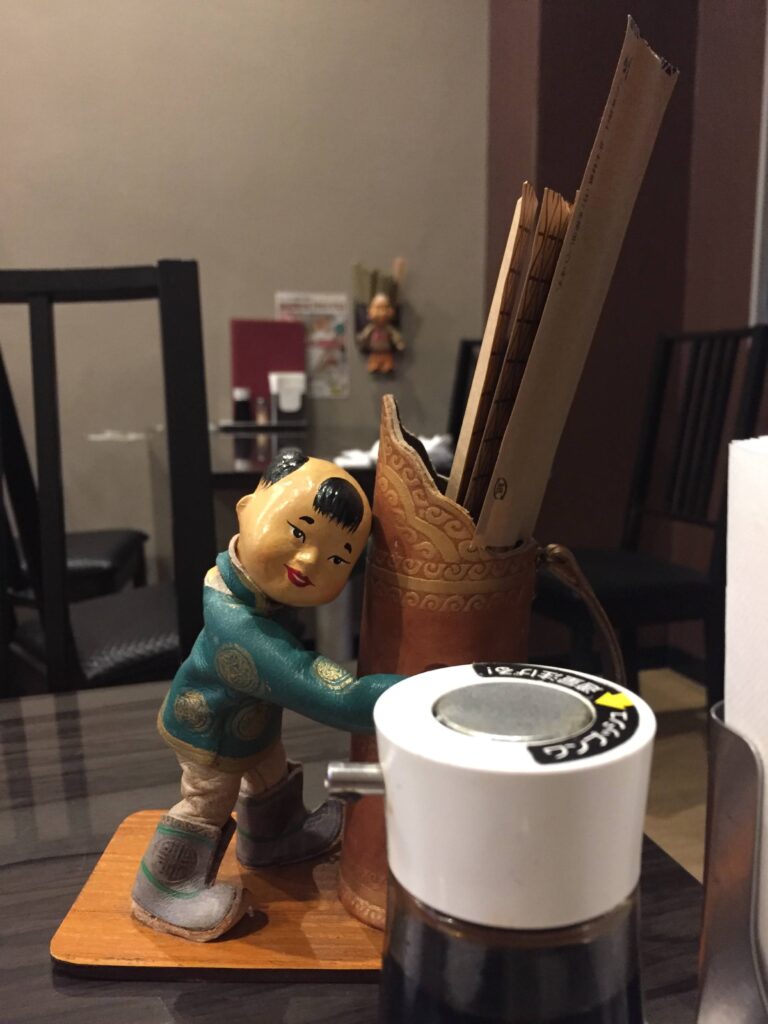
A Mongolian Restaurant in Tokyo
Last week, I accidentally found a Mongolian restaurant.
Last night, I made a point to go inside and order something, and I had a little weekend adventure. It wasn’t a huge sightseeing marathon, but this isn’t that kind of travel blog.
I don’t know the name of my dish; the restaurant was so authentic that everything was written mostly in cryllic (cryllic is the name of the Russian writing system, which has been the official script of Mongolia since the days of the USSR). Anyway, the picture on the menu looked good enough, so I pointed to it and asked for one order in Japanese. Strangely enough, I think the waitress was more comfortable in English than Japanese, so we had that much in common.
The picture on the menu was two brown scoops, two white scoops, and vegetables. The brown scoops looked like some kind of mammal. I noticed that there was some Japanese writing next to the cryllic. Recognizing 肉 (meat), but not the 羊 next to it, I asked what kind of 肉. She said lamb.
Sounds good, I said.
I looked around. Three wide, leathery wall scrolls hung on the cream colored wall across from me. From left to right, they told a story. The first featured Genghis Khan, the Mongolian patriarch, sitting on a throne, with tribal animals and yurts beneath his feet. The second featured Kublai Khan, Genghis’ enlightened grandson. This was really cool: he was the spitting image of Benedict Wong in Netflix’s Marco Polo. Or, rather, Benedict Wong was faithful to Mongolian cultural art. Either way, super cool.

Normally, I get sad when I think about that amazing show having been cancelled. But this time, the poster just made me appreciate the show’s authenticity even more.
Funny how food can feel like it’s taking forever, especially when you’re used to instant gratification. I hunkered down, told myself to be patient, and contented myself to observe the other customers.

No sumo wrestling customers this Saturday night. Disappointing, sure, but I quickly noticed that the restaurant was a hub for interesting foreigners.
The middle-aged couple to my left was obviously Chinese, or at least from Taiwan or Hong Kong. Chinese languages sound distinct. They are very easy to pick out in Japan. I poked my neck out to see what they were eating. Had I done a good job of ordering good food? What had they gotten?
The couple was eating from large, bowl-like dishes, their food doused heavily in reddish sauce. At least, that’s what I thought I saw. Not wanting to be rude, I quickly returned my eyes to my own table. However, when I cross-referenced what I thought I had seen in their bowl-like dishes with the faded pictures in the menu, I realized I had looked away too quickly. For the next two minutes, I fought with myself about whether to crane my neck over and look again.
I didn’t do it.
Then there was a table of four across from me, one guy and three gals, drinking soda, chewing fried, bready appetizers, and laughing. They didn’t exactly look Japanese, nor did they really sound the part. Some of the words they used sounded guttural, almost like a semitic language. As someone who grew up hearing Hebrew, it sounded beautiful to my ears.
The Chinese couple paid up, got up, and left. Now that they were gone, I felt free to admire the decorations on the wall to my left. That was when I saw a big, gray-white wolf’s hide. It looked very fluffy, and very dead. The little black paws hung just behind where one’s head might rest.
The table of four asked if they could take the Chinese couple’s place. The Mongolian waitress who felt more comfortable in English than Japanese cleared the table, wiped it down, and ushered them in.

At first, I felt excited about this, because that meant I could freely admire whatever decorations had been behind them at their table across from me. But when I saw that there was nothing there, I was only disappointed that it would be weird to turn left and admire the wolf’s hide, since the table of four might think I was staring at them.
Which I was. Only I didn’t realize it. I’m pretty sure I was the weirdo in the restaurant. Then again, it all could have been in my head. No one really seemed to pay me any mind.
Finally, my food came out. This was what it looked like:

I have never tasted anything quite like it. The meat was intensely salty, fatty, and juicy. It was soft, and had a pleasing texture that didn’t fall apart until you chewed it. The long rice was a pleasant break from the ubiquitous glutinous rice of Japan. The cucumber arrangement reminded me of Vietnamese Com Tam. The vinegary pickled vegetables combined with the rich meat and the thick rice for pockets of intense flavor. If there’s a pan- Asian culinary trifecta, this is it: meat, rice, and vinegar.
One simple example of this in Japan might be an onigiri with beef, rice, and pickled plum inside.
The tower of mayonnaise-doused cubes was a little strange. It didn’t taste bad, but it scared me a little. I think that was the only part I didn’t finish.

I finished my meal. I noticed that the other customers were playing chess. I was expecting Chinese chess or some other kind of chess, but they were playing plain old international chess. The chess pieces were Buddhas. Super cool.
I wanted to spark up a conversation, maybe even bring my dragon’s-tail, fianchetto defense beatdown to the chess board, but I speak neither Mongolian nor competent Japanese, so I only asked for the check and left.
That was when I rode my bike to Hard Boiled bar, right around the corner from Baseinn Tabata hostel. It’s a basement bar. The bartender is also an engineer, nice guy. I plopped down, ordered a gin and tonic, and practiced my Japanese verb conjugations. The bartender helped along, even pop quizzing me from time to time. It was a relief, knowing I could go to a bar with a friendly, familiar face. I’m going to keep studying my Japanese; maybe, the next time I want to strike up a conversation with strangers, I’ll be able to do it.